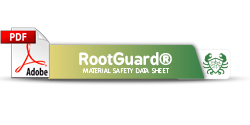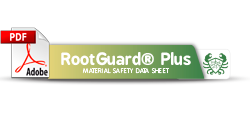 Fumigant Alternatives
Fumigant Alternatives
In 1991, climatic studies of historic concentrations of methyl bromide captured in polar ice showed increasing amounts of the compound over the past several decades. In subsequent studies, it was shown to catalyze the destruction of ozone, and determined to be a significant contributor to stratospheric ozone depletion, thinning, and the creation of an ozone hole over Antarctica. After being classified as a Class I ozone depleting chemical in 1993, methyl bromide was mandated by the Clean Air Act of 1990 for eventual phase out from production and agricultural use. After a 13-year-long regulatory process with numerous shifts to the schedule for final regulatory action, the final phase-out date for methyl bromide production and importation, for use within the U.S. proceeded as scheduled on January 1, 2005. As with other ozone depleting substances regulated under the Montreal Protocol on Ozone Depleting Substances and the U. S. Clean Air Act, supplies of materials manufactured and imported prior to the scheduled phase out continue to be legal to use as approved for only specifically exempted crops.
Based on CUE petitions developed, submitted and supported by EPA and USDA, the United States State Department, issued a critical use exemption for continuing use of methyl bromide for tomato, pepper, eggplant and strawberry awarded for calendar years 2005 through 2011. Because of the diminishing level of existing commercial stocks, and significantly reduced allowances for the production of new product, shortages in methyl bromide supply are becoming more apparent, and are fully expected to become much more severe at the end of the 2011-2012 season.
With the formal EPA fumigant reregistration process completion (December 2010), all of the currently registered fumigant alternatives have new restrictions which will further restrict or limit their use (i.e., potential needs for reduced rates and acreages treated per day, expanded buffer zones, worker exposure risks). The new regulatory criteria for fumigant use are designed to strongly encourage emission reduction strategies which include high barrier (more gas impermeable) plastic mulches to reduce overall field application rates and soil emissions of fumigant gases.
Grower transition to new IPM methods have been largely and only recently driven by limited methyl bromide supply and formulation availability, a significantly lower cost structure for combinations of chemical alternative strategies compared to that of methyl bromide, and by many other field, pest, soil, crop, and economic considerations. The primary objective for any methyl bromide transition strategy has been to manage adoption of alternatives over time, to minimize changes to the crop production system, and define and remove performance inconsistency of alternatives
Alternative Fumigant Chemicals
Generalized Summary of maximum use rate and relative effectiveness of various soil fumigant alternatives to methyl bromide for nematode, soil borne disease, and weed control in Florida.
Furthermore, all of these fumigants require adherence to massive government regulation resulting in expensive compliance programs. These chemicals also expose the grower to worker safety liability and to further scrutiny and intrusive auditing from retail customers.
In 2011 we launched a new product line which is an all natural solution to the fumigation problem, RootGuard…
ROOTGUARD is a soil amendment that enhances the soil’s living microbial environment for your plant.
ROOTGUARD is a proprietary blend of three important organic products that work together in the soil contributing to a healthy root system. The important products ROOTGUARDtm contains are an organic food source for soil microorganisms, Humic Acid and Chitin.
How do they work together to promote this healthy environment?
First, an organic material is anaerobically digested to help promote the establishment of Beneficial Microorganisms in your soil. The Beneficial Microorganisms in the soil help:
1. Increase nutrient availability and uptake by the plant including, but not limited to, Nitrogen, Phosphorus, Sulfur, and Iron.
2. Suppress plant disease and damage to roots from plant parasitic nematodes.
3. Aid in improving soil structure.
Second is Humic Acid found in Leonardite. This natural product has been oxidized by nature, resulting in a highly active Humic Acid. Humic Acid is a well-known biostimulant that helps to stimulate the Beneficial Microorganism population. It also helps provide sites for Microorganisms to colonize and micronutrients to bind to.
Third is an organic material containing Chitin. Chitin is the most abundant component of insects and plant parasitic nematodes, comprising 50% cuticle dry weight. Chitin is water insoluble and is consumed by soil microbes following enzymatic degradation. The enzymes (chitinases) produced by soil microbes are stimulated by the addition of Chitin, creating a hostile environment for damaging fungi and nematodes.
The combinations of these three components of ROOTGUARD help to create a healthy environment in the soil and a healthier plant.
RootGuard is labeled for use in Florida and labels are pending for Georgia, South Carolina, North Carolina, Virginia and New Jersey. We also sell the individual ingredients under the names of Chitimine (crabmeal) and Flouriza (chicken litter) but have found that the combination is much more effective.
For more information about our products download the following product labels:


 For further information visit our website:
For further information visit our website:



